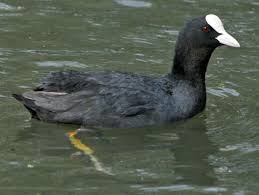Overstaying winged visitors baffle birders
READ MORE
outnumbered
The birds at the Carambolim lake.
View Larger Map
View Larger Map
PANAJI: The visas of these winter visitors expired in March, but they are still flying and basking in the sun, arresting the attention of those not used to seeing them here in the summer.
A flock of around 130 painted storks with their beautiful pink-tinged long legs, a few comb ducks and spot-billed ducks and coots can still be seen on the dried-up bed of Carambolim lake. "It is something really strange, as they continue to enjoy the hot Goan summer," birder and Goa Bird Conservation Network (GBCN) member Paresh Gosavi said.
Water bodies in the state are generally bare of winter visitors by March every year. Painted storks wing their way back home to the plains in northern India. It is only small flocks of resident birds, which can be seen around in the lakes and wetlands in summer. With temperatures rising to over 34C and humidity levels touching 85%, the summer has reached its peak.
The water level has dropped drastically in most lakes, and at Carambolim, birders say the overstaying winged visitors are having a gala time. Small channels of water have amassed aquatic life, including fish, crustaceans and mollusks in a heap, making easy pickings for the winged species.
"The birds are having their breakfast, lunch and evening snacks at the lake, and this is a daily affair at this mega bird fair," Gosavi said.
Another birder, Omkar Dharwadkar had reported seeing over 80 painted storks in the Shiroda wetlands during the first week of May 2013.
The other birds spotted by Gosavi at Carambolim lake are over

50 spoonbills,

over 40 wooly necked storks,

some 10 coots,
river terns, a few comb ducks, spot-billed ducks and swamp hens. They are also joined by a few pheasant tailed and bronze winged jacanas, cormorants, egrets and bigger numbers of lesser whistling ducks.
Birders are baffled by the winged visitors braving it out here in the hot summer but are unwilling to comment on the aberration in the migration pattern. "You will have to ask the painted storks themselves," GBCN state coordinator Parag Rangnekar said.
Birders feel the migratory pattern needs to be studied. "We cannot jump to any conclusion," Gosavi said.
"During the same month last year, I had seen 20 lesser adjutant storks in the lake," he added. This year in 2013, painted storks have outnumbered all other waterfowls except whistling ducks.
Agreeing Rangnekar said, "It is for the first time that we are seeing painted storks in such large numbers." Birders say they may have preferred Goa over Karnataka and Maharashtra due to poor monsoons in 2012 in the neighbouring states.
Earlier, the winged visitors had flocked to the nearby Dhado wetland instead of Carambolim. They seem to be undeterred by the noise of the trains and laying of an additional line at the site. "Its not just birds but crocodiles are also seen basking in the sun (at Carambolim) any time of the day," Gosavi said.
A flock of around 130 painted storks with their beautiful pink-tinged long legs, a few comb ducks and spot-billed ducks and coots can still be seen on the dried-up bed of Carambolim lake. "It is something really strange, as they continue to enjoy the hot Goan summer," birder and Goa Bird Conservation Network (GBCN) member Paresh Gosavi said.
Water bodies in the state are generally bare of winter visitors by March every year. Painted storks wing their way back home to the plains in northern India. It is only small flocks of resident birds, which can be seen around in the lakes and wetlands in summer. With temperatures rising to over 34C and humidity levels touching 85%, the summer has reached its peak.
The water level has dropped drastically in most lakes, and at Carambolim, birders say the overstaying winged visitors are having a gala time. Small channels of water have amassed aquatic life, including fish, crustaceans and mollusks in a heap, making easy pickings for the winged species.
"The birds are having their breakfast, lunch and evening snacks at the lake, and this is a daily affair at this mega bird fair," Gosavi said.
Another birder, Omkar Dharwadkar had reported seeing over 80 painted storks in the Shiroda wetlands during the first week of May 2013.
The other birds spotted by Gosavi at Carambolim lake are over
50 spoonbills,
over 40 wooly necked storks,
some 10 coots,
river terns, a few comb ducks, spot-billed ducks and swamp hens. They are also joined by a few pheasant tailed and bronze winged jacanas, cormorants, egrets and bigger numbers of lesser whistling ducks.
Birders are baffled by the winged visitors braving it out here in the hot summer but are unwilling to comment on the aberration in the migration pattern. "You will have to ask the painted storks themselves," GBCN state coordinator Parag Rangnekar said.
Birders feel the migratory pattern needs to be studied. "We cannot jump to any conclusion," Gosavi said.
"During the same month last year, I had seen 20 lesser adjutant storks in the lake," he added. This year in 2013, painted storks have outnumbered all other waterfowls except whistling ducks.
Agreeing Rangnekar said, "It is for the first time that we are seeing painted storks in such large numbers." Birders say they may have preferred Goa over Karnataka and Maharashtra due to poor monsoons in 2012 in the neighbouring states.
Earlier, the winged visitors had flocked to the nearby Dhado wetland instead of Carambolim. They seem to be undeterred by the noise of the trains and laying of an additional line at the site. "Its not just birds but crocodiles are also seen basking in the sun (at Carambolim) any time of the day," Gosavi said.
No comments:
Post a Comment